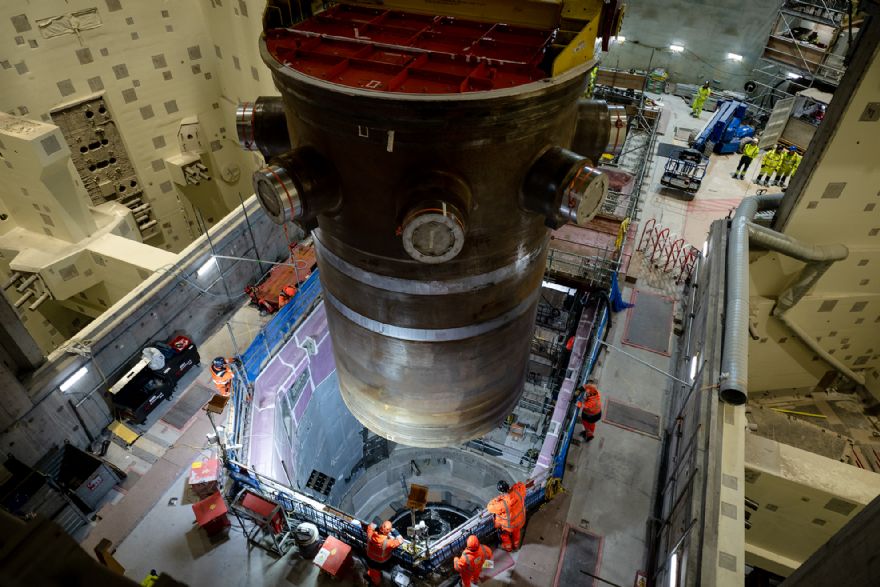
At Hinkley Point C nuclear power station, workers installed Britain’s first new nuclear reactor for more than 30 years when the first of two 13m-long ‘reactor pressure vessels’ were installed; they alone will produce enough energy to generate reliable low carbon electricity for 3 million homes; and with two units, the power station will provide Britain with 7% of its electricity. This development comes less than 12 months after the huge steel dome was lifted in place to close the reactor building (this reactor is the first to be installed at a British power station since Sizewell B’s in 1991).
Energy Secretary Ed Miliband said: “Installing the first reactor pressure vessel at Hinkley Point C is a significant feat of engineering and a major step forward for the UK’s most advanced nuclear project. Getting Hinkley up and running to produce clean power for six million homes will be a win for our long-term energy independence, protecting billpayers as we accelerate to ‘net zero’.”
The ‘reactor pressure vessel’ (RPV) is a 500-tonne steel container that holds nuclear fuel used to make heat to produce steam for ‘the world’s largest turbine. The RPV arrived at Hinkley Point C in February last year and has been in store until the installation, which was completed early in December.
In a precision operation, the RPV was lifted onto rails and inserted through a 19.5m-high equipment hatch before being rotated by the large internal polar crane and lowered onto a support ring with just 40mm clearance on either side. It will be flanked by four 25m-high steam generators due to be fitted next year.
Stuart Crooks, Hinkley Point C’s managing director, said: “This is an important moment, not just for the team at Hinkley Point C, but also for everyone who wants to see the UK deliver energy security and fight climate change. We are working hard to play our part and using the experience gained delivering the first reactor to drive efficiencies in building our second one. That experience will also benefit follow-on projects, such as Sizewell C — and boost jobs and skills for the UK’s growth agenda.”